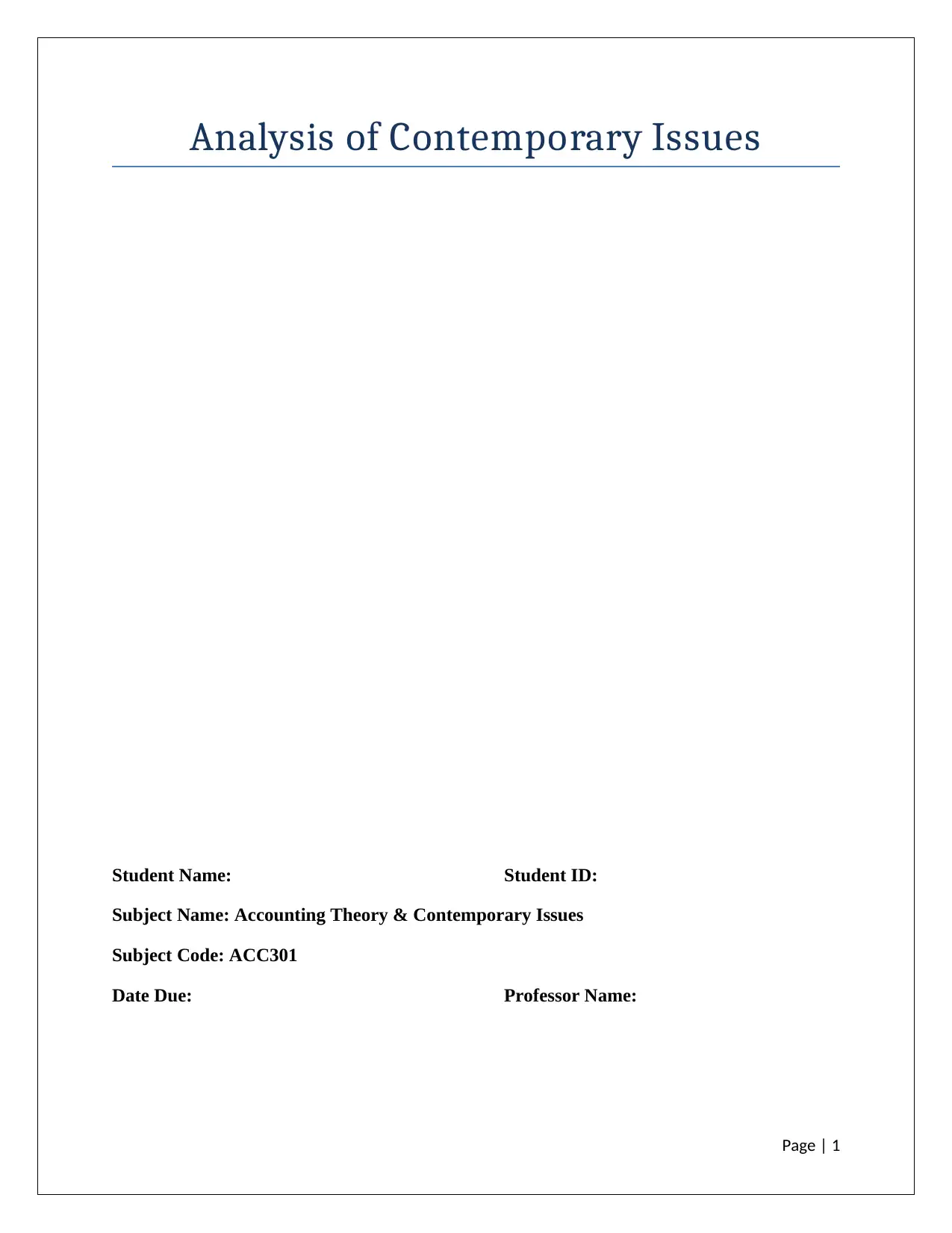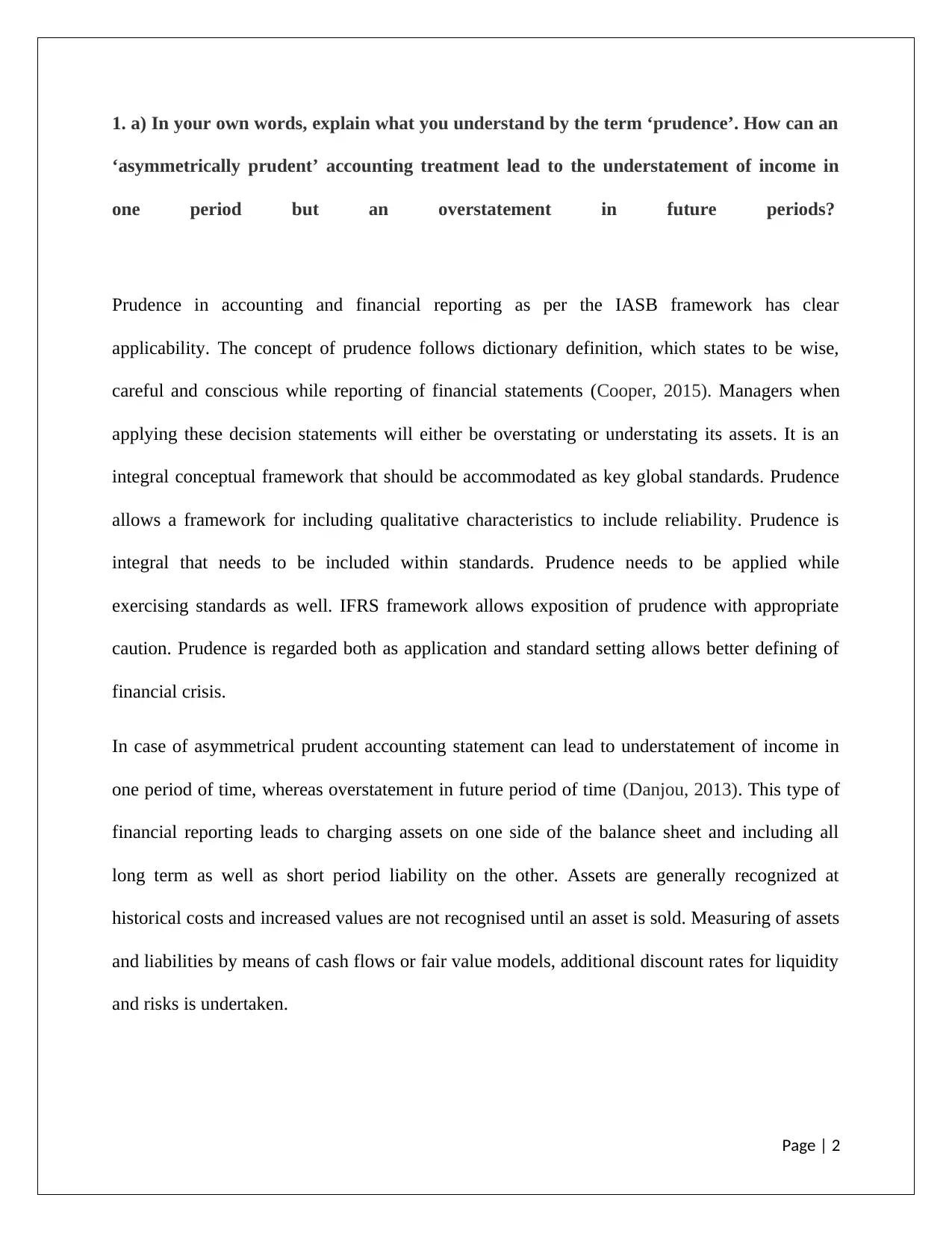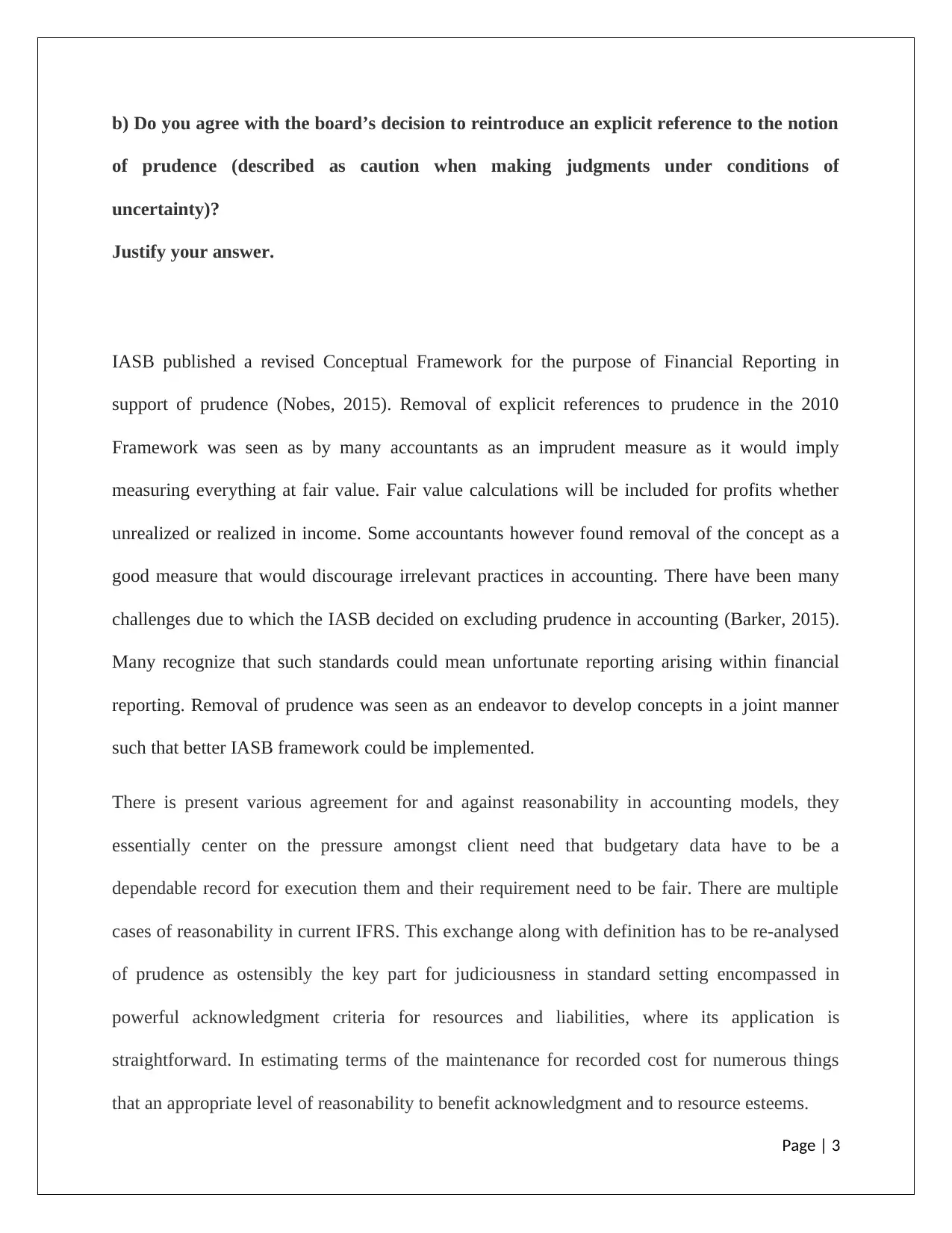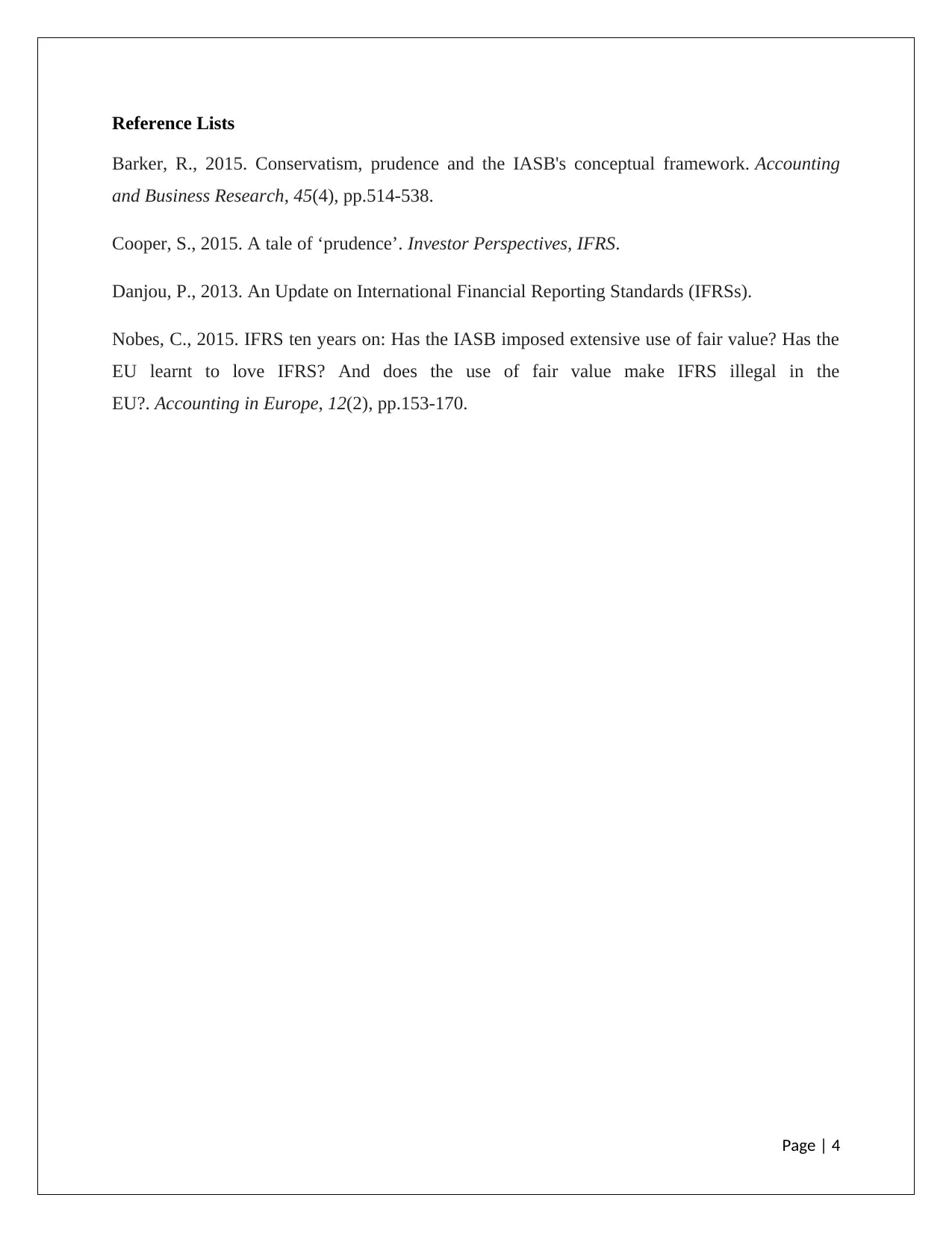ACC301: Analysis of Prudence in Accounting and Financial Reporting
VerifiedAdded on 2021/06/17
|4
|735
|31
Homework Assignment
AI Summary
This assignment delves into the concept of prudence in accounting and financial reporting, as defined by the IASB framework. It explores the meaning of prudence, its application, and the implications of 'asymmetrically prudent' accounting treatments, particularly how they can lead to income understatement in one period and overstatement in subsequent periods. The assignment further examines the decision to reintroduce explicit references to prudence, discussing arguments for and against this approach, referencing literature on conservatism and the IASB's conceptual framework. The analysis covers the challenges faced by the IASB, the role of fair value calculations, and the importance of prudence in standard setting and its impact on financial reporting practices. The paper includes a detailed discussion of the framework and the application of prudence in the context of IFRS.
1 out of 4










![[object Object]](/_next/static/media/star-bottom.7253800d.svg)